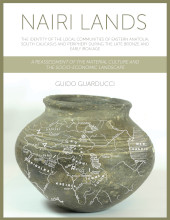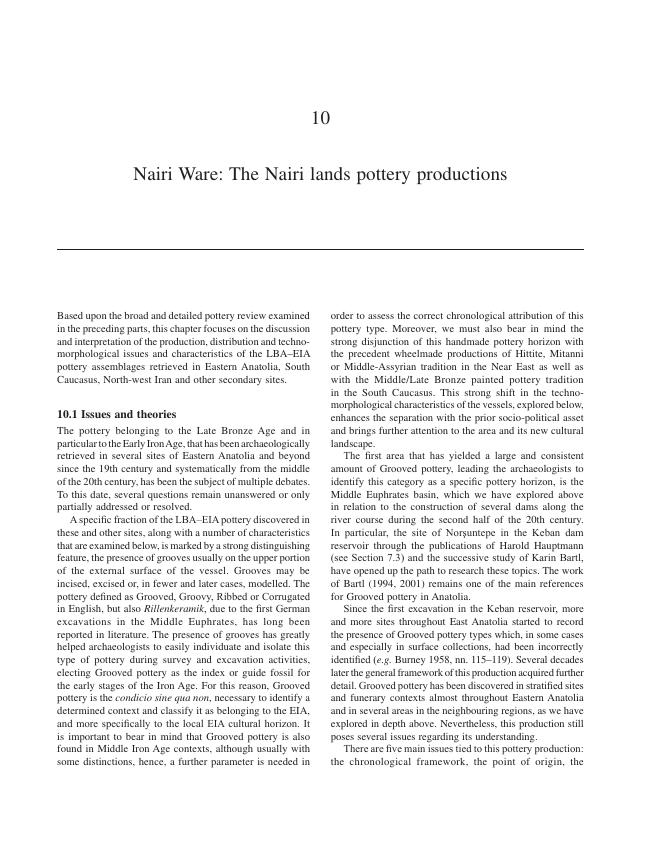Nairi Lands : The Identity of the Local Communities of Eastern Anatolia, South Caucasus and Periphery During the Late Bronze and Early Iron Age : A Reassessment of the Material Culture and the Socio-Economic Landscape
288 p.
This study analyses the social and symbolic value of the material culture, in particular the pottery production and the architecture, and the social structure of the local communities of a broad area encompassing Eastern Anatolia, the South Caucasus and North-western Iran during the last phase of the Late Bronze Age and the Early Iron Age. This broad area is known from the Assyrian texts as andlsquo;Nairi landsandrsquo;. The second part of the study, furnishes a reassessment of pottery production characteristics and theories, as well as of the socio-economic structure and issues, tied to the sedentary and mobile local communities of the Nairi lands. The study brings into focus the characteristics, the extension and the distribution of Grooved pottery, along with other pottery typologies, by providing an accompanying online catalogue with detailed descriptions and high-resolution images of the pots and sherds obtained from public and private institutions in Turkey and Armenia. Moreover, the socio-political org
anisation and subsistence economy issues are addressed in order to advance a possible reconstruction of the social structure of the Nairi lands communities. Particular attention is devoted to the pastoral nomad component and the role played within the Nairi phenomenon. The study includes a very large corpus of text images and high-resolution color images of the pottery of the area under examination, gathered by the author in order to offer a reliable tool and compendium. [Publisher's text].
Special access authorizations may apply; please contact us for further information.
-
Informazioni
ISBN: 9781789252811
MATERIE



